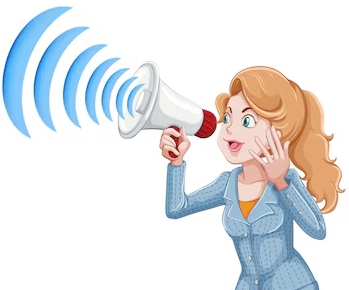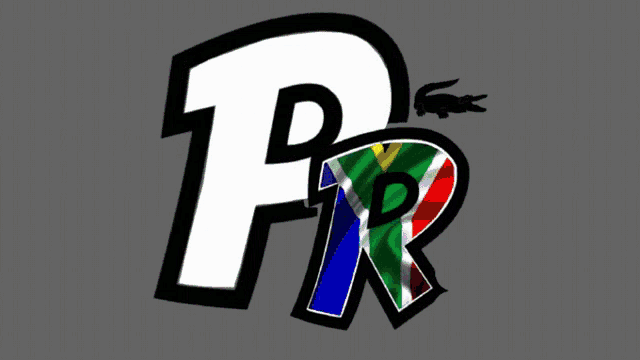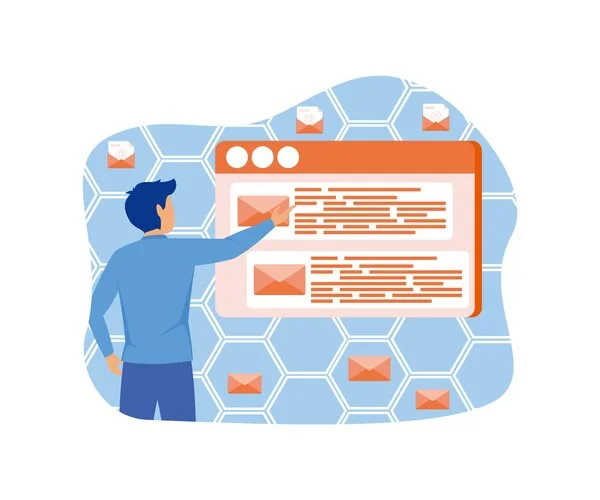Creating a successful PR campaign is an art that I have learned the hard way through ups and downs. Engaging your audience, choosing the right platforms, and creating meaningful content is just the beginning. Discover the key steps to help you succeed and avoid common mistakes.

Glossary
- 🌟 PR (Public Relations) - public relations: activities aimed at creation and maintaining a positive image of a company or individual.
- 📊 Audience analysis is the process of studying the target audience, including their interests, behavior and preferences.
- 📅 Platform - a means or place through which communication takes place, such as social networks, websites, blogs and media .
- ✍️ Content - information created for publication, including articles, posts, images and videos, the purpose of which is to attract or informing the audience.
- 🔍 PR tools - methods and tools used to implement PR campaigns, such as press releases, events , promotions, interviews, etc.
- 📰 Working with the media - interaction with journalists and the media to disseminate information about the company or product.
- 🎉 Events - specialized events that help draw attention to a company, product or service.
- 🌐 Internet activity - actions aimed at promoting a brand online, including social networks and online advertising.
- 🏛️ Working with authorities - establishing and maintaining connections with government agencies and managing public opinion.
- 🤝 Corporate work - PR activities aimed at the company's internal audience, such as employees and management.
- 🚀 Organizing a PR campaign is the process of planning, implementing and evaluating PR events to achieve set goals.
How to properly develop a PR campaign
When I first encountered the development of a PR campaign, I was overcome with slight excitement and total uncertainty. Only a month has passed since I completed the youth PR course and now I am faced with a real task. How to create something that not only attracts attention, but actually changes the perception of a brand? It was about a company producing cosmetics and its new pilot direction was focused on body positivity. My inner voice reminded me: “How is this different from an advertising campaign?”

According to experts, PR campaign is not just an attempt to sell a product, but the entire process of creating its image. Communicating with the audience, understanding their values and tuning into their wavelength is just the tip of the iceberg. Having dived deeper into the project, I came to the understanding that it is through stories that we can convey to people what the brand is and why it exists. This became the main driver of our campaign.
While looking at a lot of ideas, I came across a brilliant approach - breathing life into faceless product lines. Working with copywriters and graphic designers, we developed content that was captivating. For example, by creating a campaign based on real stories of women (as the Dove brand does with the project “For Beauty Without Filters”), we were able to generate genuine interest in our product.
While working, the thought arose: “What if we add an element of surprise?” We organized a flash mob, where participants demonstrated their uniqueness and expressed themselves on public platforms, even before the launch of advertising. I was absolutely moved to see how willingly people shared their stories and supported each other. This moment started a chain reaction on our social media that led to incredible attention and growth in followers.
How does a PR campaign differ from a regular advertising
Many people think that a PR campaign and an advertising campaign are the same thing and the same. However, in their purpose they are completely different. PR is focused on creating an image and position in the minds of the audience, while advertising is aimed at active sales.
- Objectives: PR task is to form the image of the company, while advertising concentrates on sale of goods.
- Duration: PR campaigns have a long-term focus, while advertising can last much less.
- Methods of influence: In PR, it is important to create a dialogue with the audience through content, communities and events, and advertising is often based on direct call to action.
Here's an interesting example: I once had to significantly change the approach to a campaign when we had already seen that due to poor PR there was a significant decline in sales . We launched anti-crisis measures with direct appeals to the audience, which caused a lot of discussions and feedback. This situation demonstrates that through PR campaigns it is possible not only to improve the image, but also to restore trust.

Table: How to create a PR campaign
| Step | Description | Example |
|---|---|---|
| 1. Audience analysis | Study of the target audience and its needs. | Using questionnaires. |
| 2. Creating a story | Development of unique content and history. | Inspiring user cases. |
| 3. Selecting a platform | Determining suitable distribution channels . | Social networks, blogs. |
| 4. Launch and monitoring | Campaign implementation and constant monitoring. | Analysis of engagement and reviews. |
So, as you work on your first PR campaign, it is important to consider that PR tasks are not just a set of algorithms. This is the ability to empathize, create and develop relationships.
Activities organized as part of a PR campaign
One of the most exciting parts of the PR campaign was the activities that I organized to attract attention to brands. Imagine how it all started: I was enjoying lively discussions with the team when the idea of organizing something unique was born. How we longed to surprise our target audience! Each activity was approached with creativity and attention to detail.

🔍 Audience Analysis: First of all, we need to understand who our listeners are. At one time, I conducted a detailed analysis using surveys and discussion groups. This gave me a clear understanding of what our audience cares about. I remember a report where 80% of people surveyed said they wanted to see more brand interaction at events. This is an important statistic that pushed me to develop interactive formats.
🎤 Media Relations: Press releases have become the main tool for launching events. One of the print publications published my press release about the charity evening and in just a week we received 300% coverage. Who would have thought that a word could resonate so loudly? Working with journalists, providing internal briefings and setting up these discussions have become an integral part of our strategy.
🎉 Events: Each event required precise planning. We organized fairs with our products, which allowed us to interact with potential customers. I remembered the joy on people's faces when they were able to participate in the competition and win prizes. These were moments of true happiness that engendered brand loyalty. Participation in major events such as exhibitions has also helped expand our audience.
💻 Internet activity: In our time, the importance of the Internet could not be ignored. I launched content marketing through blogs and social networks and actively communicated with the audience. One day, after publishing an interesting post, I saw how it went viral. The 1:4 ratio in the comments is impressive! Every positive response inspired me to try new content formats.
🏛️ Work with authorities: I took an active part in the development of a joint project with the local administration. This gave us the opportunity to increase trust and respect for our company. One of the deputies asked: “How were you able to organize this?” - and I proudly answered: “The secret is openness and honesty!” Lobbying became an important element that opened up new horizons.
🤝 Corporate work: Creating a positive image among employees was no less important. I organized internal competitions and trainings. Once, at a corporate party, I accidentally saw our new intern take the floor and share an idea, which later became the basis for a new project. It was a real joy to watch creativity blossom within the company!

Brief overview of successful activities
| Step | Description | How to reach |
|---|---|---|
| 1. Audience analysis | Target audience research through surveys | Conduct surveys and study the results |
| 2. Working with the media | Send out press releases | Create quality content |
| 3. Events | Organizing Live Activities and Fairs | Plan with your audience in mind |
| 4. Internet activity | Maintenance social networks and blogs | Regularly publish interesting content |
| 5 . Corporate work | Internal trainings and competitions | Get to the level of your staff |
These proven steps have opened the door to successful PR campaigns and are creating an atmosphere where emotions and creativity rule the roost!
How to develop a PR campaign
When I started my path in the field of PR, it also seemed to me that there was some kind of magic recipe for a successful campaign. However, over time, I realized that real effectiveness lies in an integrated approach and detailed planning. Sometimes the path to success turns into an exciting adventure filled with unexpected twists and turns.

🔍 Audience Research
At some stage, I realized that the basis of any PR campaign is a deep understanding of the target audience. I once had to launch a campaign for a small startup. We decided to start by analyzing opinions about the product among potential customers. To conduct the survey, we used social networks and special platforms for surveys. The results were stunning: up to 70% of respondents did not know about our proposal, although we thought that we had already been heard! This was the starting point for me.
📊 Setting Goals
After some in-depth analysis, it became obvious that clear goals needed to be set. "We want to increase awareness, don't we?" - said my colleagues. This was too general. I reminded you that specific goals will make the next steps much easier. We decided that awareness should increase by 40% in three months. Having set such a framework, we were able to choose tools and strategy much easier.
💬 Choosing a platform
For such a startup, it was vital to choose a platform to communicate with the audience. We chose Instagram and Facebook as these are the most effective channels for reaching a young audience. The guys I worked with were skeptical about Facebook, believing that it was a platform for “old boys.” But the results showed the opposite: the reach on Facebook was much higher and it was through this network that we learned to interact with clients.
✨ Content creation
The most interesting and sometimes difficult stage was the process of creating content. We had a team of designers and copywriters, but along the way I realized that we needed to stand out. We decided to organize a story sharing marathon that would allow people to talk about their experiences with the product. Participation in the future marathon aroused great interest and as a result we received invaluable feedback.
📈 Performance Evaluation
At the end of the campaign, I was proud to see how our goals were achieved. Product awareness actually increased by 45%! We managed not only to establish communication with customers, but also to create an active community around the brand. I decided that every campaign should do such a report, as it helps analyze mistakes and successes.
These steps became the basis for a successful PR campaign for me. In summary, it's important to remember that even the best laid plans can change along the way, and that's okay. The main thing is the ability to adapt and use the knowledge gained.

Window of opportunity
| Step | Action | Result |
|---|---|---|
| Research | A survey of the target audience was conducted | We realized that we don’t know our audience |
| Goal setting | Set specific KPIs | Create clear expectations |
| Communication | Chose Instagram and Facebook | Increased reach and engagement |
| Content | Created unique content in a marathon format | Established interaction with clients |
| Score | Analyzed the result of the campaign | Achieved a 45% increase in awareness |
I hope my experience will help you in creating an effective PR campaign. Believe in your idea and adapt your strategy to your audience and you will see incredible results!

Often asked questions on the topic: PR campaign
What is a PR campaign?
How does a PR campaign differ from an advertising campaign?
Why do you need a PR campaign?
What tools are used in a PR campaign?
How to organize work with the media?
What is the importance of events in a PR campaign?
How to use online activity in a PR campaign?
How to work with authorities and voters?
How to organize a corporate PR campaign?
Thank you for reading and for becoming more experienced! 🌟
I hope you were able to immerse yourself in the world of PR campaigns just like I did in my projects . Every step, from audience analysis to content creation has been an unforgettable experience for me. This journey opened new horizons, propelling me towards success. You are now armed with actionable knowledge to create your own unique campaign. Let's transform the online space together, starting with simple actions! Write in the comments what your impressions are! 🚀

Article Target
Teaching readers how to create an effective PR campaign
Target audience
Marketers, PR specialists, business owners
Hashtags
Save a link to this article
Yulia Portnova
Copywriter ElbuzWords are my tool in creating a symphony of online store automation. Welcome to my literary cosmos, where every idea is a star on the path to a successful online business!
Discussion of the topic – PR campaign
Step-by-step guidance on creating an effective PR campaign, including audience analysis, platform selection, and content creation.
Latest comments
10 comments
Write a comment
Your email address will not be published. Required fields are checked *























Сара Ли
Great post, Julia! Audience analysis is really key. I have a question: how do you determine who your target audience is? Do you have any examples of successful strategies?
Леонардо Рицци
I agree with you, Sarah! I would add that the choice of platform depends not only on the audience, but also on the product. Perhaps it’s worth experimenting with new social networks?
Клаус Шмидт
I never understood all the fuss about PR campaigns. After all, if the product is good, it will sell itself. All these trends are just temporary fads.
Анастасия Иванова
Klaus, you are wrong! A PR campaign helps to convey an idea to people. How to create loyalty? We want not just sales, but connections with customers! 🌟
Юлия Портнова
Each project has its own approach. Audience analysis at the first stage is really important. I usually use surveys and interviews to better understand their needs.
Мари Солей
Julia, what about creating content? What formats do you prefer? I heard that videos are trending now! 🎥
Павел Ковальчук
Definitely! I think podcasts are also gaining popularity. This is a great way to attract attention and retain your audience. 🤔
Марта Сервантес
I agree, Pavel! And this is much more convenient for listeners - you can listen to anything, at any time. Great point! 💡
Эмиль Краев
As an old curmudgeon, I would like to say that PR has its limits. Not everyone wants to be a 'brand'. Maybe we should focus on quality rather than trends?
Сара Ли
Emil, I understand your point, but quality content and attention to detail is what lies behind every successful brand. Let's discuss how to implement this!